Metal material parts produced through the forging process are known as forgings. During forging operations, a compressing force pressures the metal, causing plastic deformation and an alteration of the metal grain flow, whereby the metal assumes the shape of the forging die. Note that, in this process, while forged metal material may be preheated, forged metal is never melted or poured. Read More…
For over 30 years, we have provided metal forged products for a wide variety of industries, including the aerospace, military, food service, medical, and automotive industries. Our customers know they can trust our forgings for quality and affordability.

Although we have over 100 years of experience, we are committed to continually expanding our offerings in all industries. We are not content to remain as we are, but we continually work to improve our products and processes each and every day.
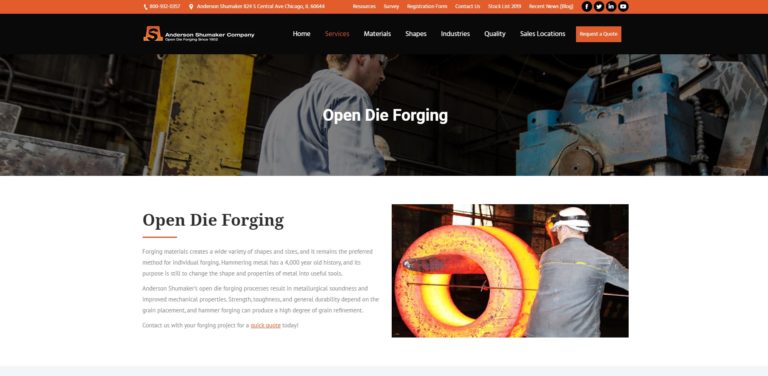
All Metals & Forge Group is your ISO9001:2015 and AS9100D registered forging facility. All Metals provides a wide range of materials, products and services, including discs, shafts, sleeves, cylinders, plates, blocks and many other shapes, both stock and custom, satisfying all of their customers’ requirements. Give All Metals & Forge Group a chance to satisfy your needs— you’ll be glad you...

Welcome to Edgerton Forge, Inc., where we specialize in the production of high-quality forgings for a wide range of industries and applications. With a rich history spanning decades and a steadfast commitment to excellence, we have established ourselves as a trusted leader in the forging industry.

Trenton Forging is a QS 9000 producer of high-quality closed impression die steel forgings including steering and suspension parts, engine parts, construction and mining parts, and many more from carbon and alloy steel. For more information please call Trenton Forging today!

More Forging Companies
Forging Applications
The forging process is widely used because it produces strong and durable metal products. These products are essential for applications that require reliable support for human wellbeing and safety.
Industries that use forgings include aerospace, agriculture, automotive, aviation, construction, defense, food processing, industrial manufacturing, mining, oil and gas, and shipping.
Products Produced from Forging
Manufacturers use forging to create metal products in various shapes, sizes, and strengths. Common examples include jewelry, kitchenware, weapons, and hardware.
Forgings are also used as components in ships, tractors, engines, tools, airplanes, automobiles, missiles, and material handling equipment. These parts include augers, gears, engine blocks, train tracks, ship valves, brass forged bolts, anchors, and more.
History of Forging
Humanity’s relationship with metalworking dates back to its earliest discovery. Among the most ancient examples of metal forging are those crafted by the Sumerians around 4500 BC. As the first known civilization, the Sumerians emerged in Mesopotamia, flourishing along the Euphrates and Tigris River Valleys in what is now southern Iraq. Utilizing the metals available to them—bronze and copper—they would heat these materials over fire and then shape them by striking with rocks. Through this method, they fashioned essential tools, laying the groundwork for future advancements in metallurgy.
During the Iron Age, around 750 BC, the first bloomery furnace emerged as a groundbreaking invention. Crafted from clay and stone, this furnace relied on bellows to intensify the heat of its fires, enabling smiths to forge iron. This technological marvel found use in several societies, notably among the Nok people in what is now northern Nigeria around 500 BC, as well as in Nubia, Axum, and Kush between 1000 BC and 500 BC.
The Chinese pioneered the forging and casting of iron tools in the 5th and 4th centuries AD. They were also trailblazers in the use of blast furnaces and finery forges. Their blast furnace design, developed in the 1st century AD, remained in widespread use until the 20th century. Many other ancient civilizations, such as the Celts, Carthaginians, Greeks, and Romans, also adopted the use of blast furnaces.
The waterwheel, an ingenious invention of the Egyptians in the 4th century BC or earlier, found new purpose in the Greco-Roman world between the 3rd and 1st centuries BC. This innovation granted them extra power, revolutionizing their forging techniques. Simultaneously, across the globe in 1st century AD China, smiths harnessed the power of water wheels to drive piston bellows, advancing their iron ore forging capabilities.
As early as 900 AD, the Romans were crafting metal horseshoes, hand tools, knives, and jewelry. In the subsequent Dark Ages, the art of forging knives and other weapons became crucial for survival.
From the 10th to the 12th centuries AD, urbanization flourished thanks to the water wheel, which enabled the efficient production of large iron items. However, significant advancements in forging techniques did not occur until the Industrial Revolution.
In the 1800s, technological advancements like the steam engine revolutionized the forging process. Engineers discovered they could establish forges in any location, no longer limited to water sources. A significant milestone occurred in 1856 when Sir Henry Bessemer patented the Bessemer Process, enabling the mass production of steel. This innovation paved the way for closed die forging, which companies like Colt utilized to mass produce gun parts.
In the 1930s, engineers unveiled the modern forging press, revolutionizing the industry. Nowadays, manufacturers utilize these advanced presses alongside hammers for industrial forging. Unlike the traditional blacksmith’s hammer, these contemporary hammers are powered by mechanisms such as hydraulics, pneumatics, electricity, or steam.
Forging Materials Process
The forging process works with various metals, including copper, titanium, aluminum, stainless steel, carbon steel, brass, and nickel alloys. Each forged material has unique properties, providing different advantages to manufacturers and end-users.
Copper forgings do not spark, are not magnetic, resist oxidation, and remain stable at high temperatures. They are soft and conduct electricity effectively without causing magnetic interference or sparking.
Titanium is more expensive than most materials, but it offers excellent corrosion resistance, high temperature resistance, and a superior strength-to-weight ratio.
Aluminum is both lightweight and strong, making it easy to shape. This makes aluminum forgings particularly important for aerospace and aviation engineers.
Stainless steel is a type of steel that combines the strength, durability, and flexibility of regular steel with the added benefit of being resistant to corrosion.
Carbon steel, an alloy made of iron, is cost-effective and offers good mechanical properties, making it suitable for heat treatment.
Brass is a metal alloy mainly made of copper and zinc. It looks attractive, doesn’t spark, and has low friction. Brass is commonly used to make parts such as casings, gears, locks, hardware, fittings, and bearings.
Nickel alloy is highly resistant to oxidation and remains stable even at high temperatures. When forging nickel alloy, operations typically occur above its recrystallization temperature.
Forging Process Details
Forging shapes metal through localized compression forces, typically influenced by the temperature of the process. Industries commonly employ two main types: hot forging and cold forging. In hot forging, the metal is heated above its recrystallization temperature. This method allows for shaping complex 3D forms and is quite versatile. Cold forging, on the other hand, involves shaping metal at room temperature, typically below its recrystallization point. This technique is widely employed in the automotive sector.
Forgings are produced using two primary methods: closed die forging (impression die forging) and open die forging.
Closed die forging, the predominant method in die forging, employs either a hammer and anvil or just a hammer along with a die or multiple dies. In this process, a hammer or anvil forcefully shapes preformed metal blanks, known as ingots, into the negative forms of the desired part. The hammer and anvil envelop the workpiece, ensuring the metal flows uniformly into all sections of the die.
Furthermore, closed die forging often necessitates the workpiece passing through a sequence of impression cavities, transforming it from a crude form into the final product. The potential applications of closed die forging are virtually limitless, capable of manufacturing myriad three-dimensional shapes and intricate parts with precise tolerances.
In open die forging, metal workpieces are shaped by hammering or pressing them using non-enclosed, typically simple-shaped dies. These dies can be convex, concave, or flat. Achieving the desired shape often requires multiple strikes or presses, necessitating the operator to continually reorient and reposition the workpiece so that the dies can shape its sections sequentially.
Open die forging creates simpler forms and shapes such as round, hexagonal, and rectangular beams, bars, and profiles. Due to its cost-effective tooling and versatility, it is ideal for lower volume production and crafting unique, custom items.
Machinery Used in Forging
Depending on the specific procedure, forging typically utilizes a range of machinery, including ovens, drop hammers (consisting of hammers and anvils), and forging presses.
Oven
In the art of forging, ovens are typically fueled by either gas or coal. In modern times, gas ovens have overwhelmingly supplanted coal ovens due to their prevalence. This shift is attributed to the superior convenience of gas, despite coal’s capability to generate higher temperatures. Moreover, gas ovens demand less upkeep and are considered more environmentally sustainable compared to their coal counterparts.
Drop Hammer
Hydraulic drop hammers are upright hammers poised above a fixed anvil or die when inactive, ready to descend upon a workpiece placed beneath them. Upon release, these hammers forcefully strike the material, altering its shape through deformation.
Forging Press
Forging presses are machines employing a press, rather than a hammer, to mold metal. They harness either mechanical or hydraulic power to operate.
Variations and Similar Processes of Forging
Additional forging techniques encompass warm forging, cold forging, hot forging, hand forging, roll forging, roll ring forging, drop forging, and press forging.
Warm forging involves heating the metal to 30% above its recrystallization temperature. This process enables manufacturers to produce components with enhanced precision and reduced surface scaling. However, it necessitates greater forming forces and offers less formability compared to hot forging.
Cold forging occurs when manufacturers forge metals below their recrystallization temperature, typically at or near room temperature. This process is particularly suited for softer metals such as silver, gold, bronze, copper, brass, and platinum. Manufacturers favor cold forging due to its capability to achieve exceptionally tight tolerances and high tensile strength. Additionally, it prevents surface scaling. Cold forging enables the production of components that may not be economically feasible through solid bar machining, making it the preferred method for high-volume manufacturing.
Forging processes are categorized by the temperature at which shaping occurs. Cold forging takes place at room temperature, while hot forging occurs at elevated temperatures, often referred to as red hot temperatures in steel. Warm forging, positioned between cold and hot forging, operates at intermediate temperatures bridging the two extremes. The fundamental forging arrangement comprises an anvil, upon which the workpiece rests, and a hammer wielded to mold it into shape. Each part of the anvil serves a distinct function; for instance, the horn imparts curvature to the object. Armed with essential knowledge of material properties like malleability and ductility, a farrier can expertly select the optimal method to shape the metal.
Cold forging stands as a preferred method for shaping low-melting point metals, leveraging ambient temperatures without the need for additional heat. It particularly benefits steels resistant to strain hardening, notably those with less than 0.05% carbon content. Furthermore, it encompasses the shaping of annealed metal components, previously heat-treated but now manipulated at room temperature, falling under the domain of cold forging. Cold forging offers a key advantage in producing near-net-shape parts with improved grain flow and superior surface finish compared to their hot forged counterparts. However, this method is constrained by material choices, as many hard steels, commonly used alloys, are unsuitable for cold forging. Despite this limitation, cold forging remains favored among farriers due to its straightforward process. Notably, its widespread application is particularly prominent in animal husbandry, notably for crafting horseshoes.
Hot forging occurs at temperatures surpassing the metal’s recrystallization point, rendering the metal highly malleable for easier deformation. This process not only ensures greater formability but also results in products boasting uniform and enhanced tensile strength. Typical applications of hot forging encompass a diverse array of components such as smart balls, screws, nuts, and bolts, vital across numerous industries for their robustness and reliability.
Roll forging harnesses the power of two grooved cylinders to shape metal. In this method, a heated metal bar is fed between these cylinders until it reaches the desired dimensions. Typically employed in manufacturing hardware such as leaf springs and axles, roll forging stands out for its efficient production process. Unlike traditional forging methods, it minimizes waste by eliminating flash and yields parts with a superior grain structure from the outset.
Roll ring forging is a specialized forging technique tailored for shaping rings. Unlike closed die forging, which isn’t typically used for producing forged rings, this method leverages open die forging to achieve the desired shape and structure.
Drop forging is akin to a blacksmith’s dance with metal. It begins with a hammer, swiftly lifted and then dropped onto a piece of metal resting on a die. In mere milliseconds, the hammer descends, shaping the metal to mirror the contours of the die. This intricate process unfolds either with an open die, allowing more flexibility, or within a closed die, where the metal is enclosed, ensuring precision and uniformity.
Press forging is a method where a workpiece is shaped by gradually applying pressure, either above or below its recrystallization temperature. During this rapid process, the press molds the metal within seconds, enabling manufacturers to uniformly deform it. This technique also grants precise control over the internal strain of the forged workpiece.
Composite forging operations combine the characteristics of multiple forging techniques. For instance, cold press forging blends elements from both cold forging and press forging techniques.
Custom forging surpasses both machined parts and equivalent casts in strength. Through the forging process, the metal’s grain deforms and conforms to the part’s shape, ensuring uniformity throughout. This results in superior and more durable products, significantly extending their lifespan—a crucial advantage in fiercely competitive sectors such as gas and oil. Custom forging offers distinct advantages over other manufacturing processes like castings. It results in a lower overall cost while enhancing strength, rigidity, and overall quality. Additionally, custom forging is both cost-effective and dependable, with heat treatment yielding superior responses and strengthening metallurgical properties. It accommodates a broad range of products, ensures consistent composition, utilizes economical alloys, and eliminates issues such as porosity, cavities, or shrinkage.
Forging Benefits
The forging process presents numerous advantages: it offers unparalleled design flexibility, reduces the need for extensive secondary operations, and proves cost-effective, especially when contrasted with casting and welding. Moreover, it consistently yields exceptionally robust metal parts and products, characterized by minimal defects.
One of the notable advantages of a forged component is its ability to eliminate undesirable defects and porosity often found in cast metals. Below are the advantages of forging components over casting components:
High Structural Integrity- Forged components exhibit exceptional structural integrity, setting them apart from conventional metalworking methods. Their superiority lies in maintaining uniformity and material integrity throughout the forming process. Through forging, these components achieve remarkable chemical consistency by minimizing segregation of non-metallics and alloys. The thermal cycling and deformation inherent in forging also refine grains and induce metallurgical recrystallization, significantly enhancing both impact and shear strength of the final workpiece or component.
Forged steel eliminates the pitfalls of cast metals, such as porosity and voids that can compromise structural integrity. The forging process ensures robust components with inherent strength, reducing the necessity for extensive secondary treatments like heat treating and machining. This not only streamlines production but also enhances part durability under extreme stress conditions.
Proven Reliability- Because of their fabrication method, forged components avoid problems like cavities, voids, shrinkage, and cold pour defects often found in cast components. This makes forged components inherently tougher than their cast counterparts. Additionally, forged components can withstand sudden impacts from external forces more effectively compared to cast components.
These components boast a seamless grain flow and a denser grain structure. This unique quality endows forged components with outstanding wear resistance, obviating the necessity for additional processes to achieve extreme hardness. Consequently, forged components exhibit reduced susceptibility to shattering upon impact with other objects.
Generally Stronger- Forged components exhibit significantly greater strength compared to cast materials because their grain flows are oriented to enhance mechanical properties such as ductility, fatigue resistance, and toughness. A compact grain structure in forged components results in a higher strength-to-weight ratio, achieving greater strength and toughness without the addition of costly alloys.
Economical- Forging a component can often prove more economical than casting due to its initial higher costs being upfront. Once the tools are crafted and processes established, the production of medium to large lots becomes cost-effective. This method enables swift production turnaround, high-speed manufacturing, and minimal downtime, thereby slashing labor needs and reducing scrap accumulation, ensuring an efficient and lean fabrication process.
Things to Consider About Forging
Before committing to collaborate with a forging company, it’s crucial to ensure they can fulfill your requirements. For instance, numerous companies provide essential supplementary services like custom die machining, metal stamping, post-forging product testing (including ultrasonic testing and radiography), delivery services, and post-delivery support.
To assist you in selecting the ideal manufacturer, we’ve curated a selection of trusted metal forging companies known for their high-quality work. Before exploring their offerings, start by compiling a detailed list of your specifications. This should encompass your budget, standard requirements, delivery preferences, and timeline. Once prepared, review the profiles of the companies we’ve compiled. Identify three or four that seem most promising to you, and initiate discussions regarding your specifications. After speaking with each, compare their responses and conversations to determine the best fit for your needs.
Check out our Die Castings website
Check out our Investment Castings website

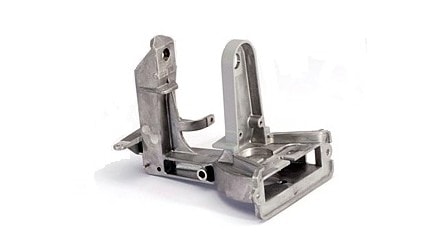

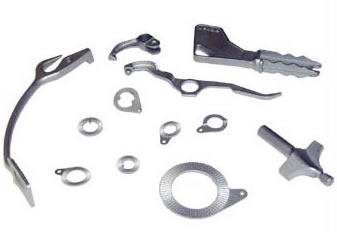
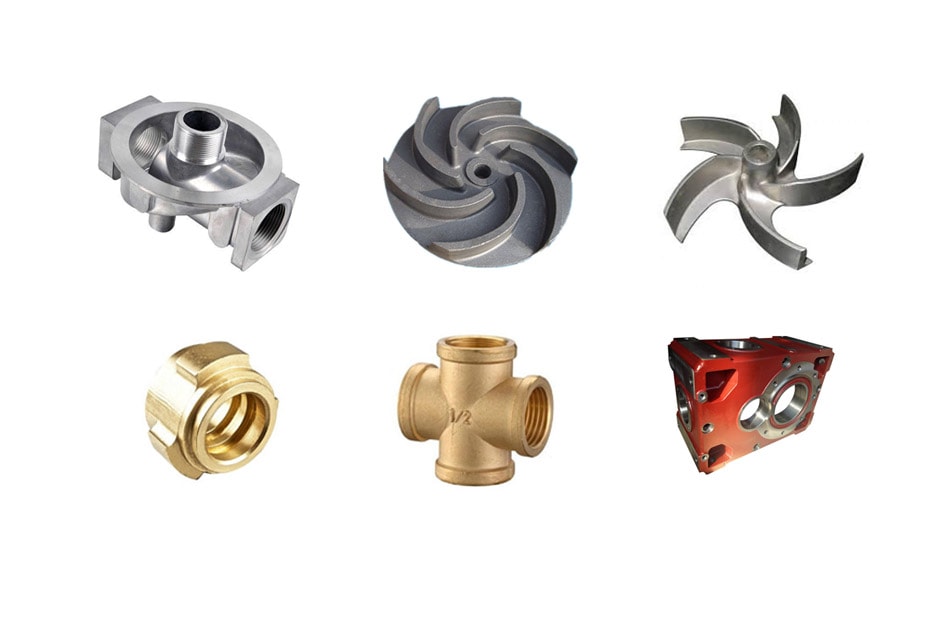
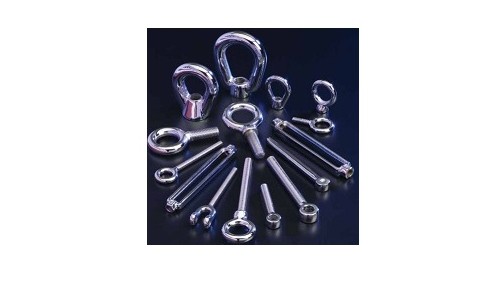
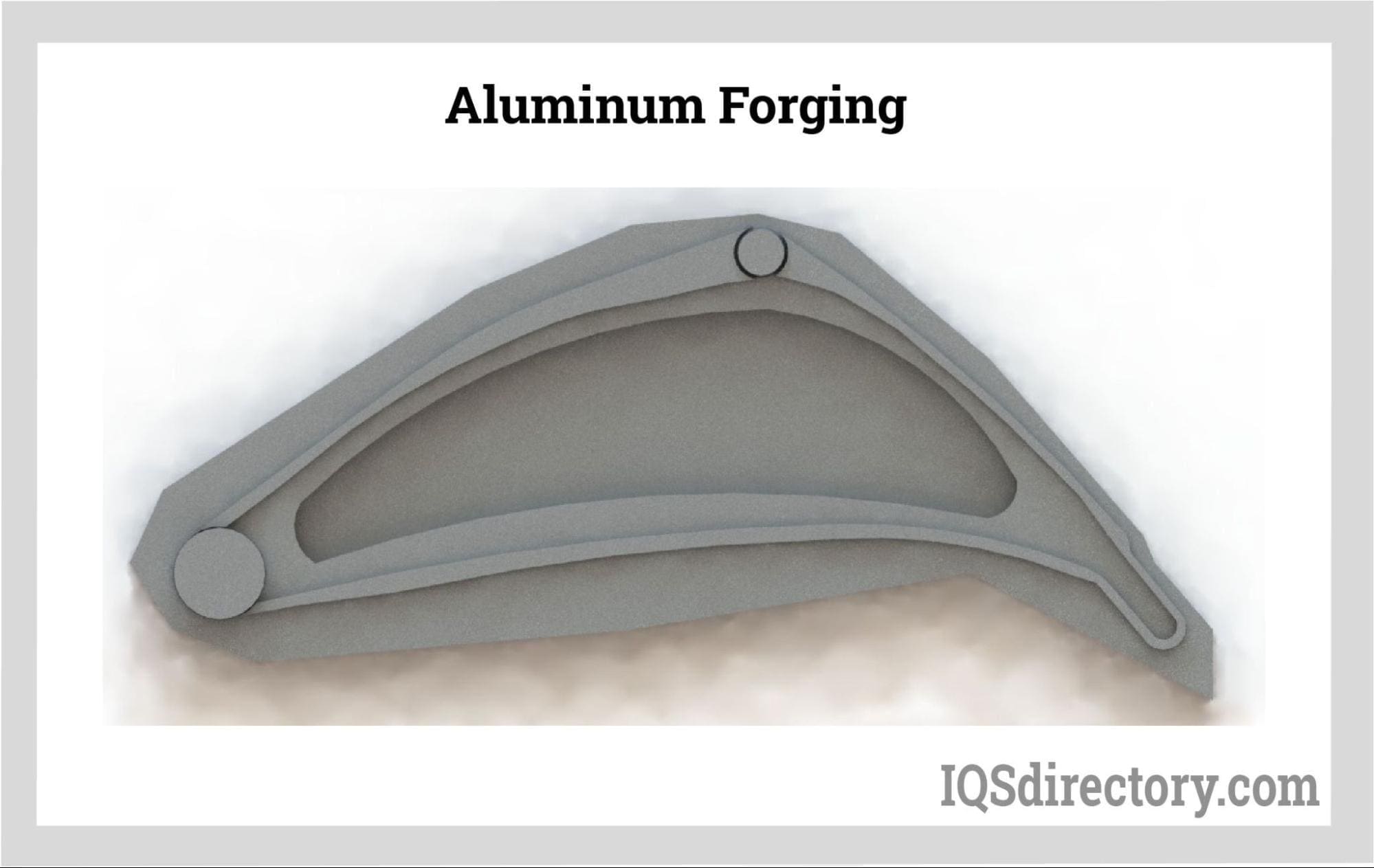








 Die Castings
Die Castings Forgings
Forgings Grey Iron Castings
Grey Iron Castings Investment Castings
Investment Castings Castings & Forgings
Castings & Forgings Bulk Material Handling
Bulk Material Handling Electrical & Electronic Components
Electrical & Electronic Components Flow Instrumentation
Flow Instrumentation Hardware
Hardware Material Handling Equipment
Material Handling Equipment Metal Cutting Services
Metal Cutting Services Metal Forming Services
Metal Forming Services Metal Suppliers
Metal Suppliers Motion Control Products
Motion Control Products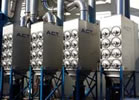 Plant & Facility Equipment
Plant & Facility Equipment Plant & Facility Supplies
Plant & Facility Supplies Plastic Molding Processes
Plastic Molding Processes Pumps & Valves
Pumps & Valves Recycling Equipment
Recycling Equipment Rubber Products & Services
Rubber Products & Services